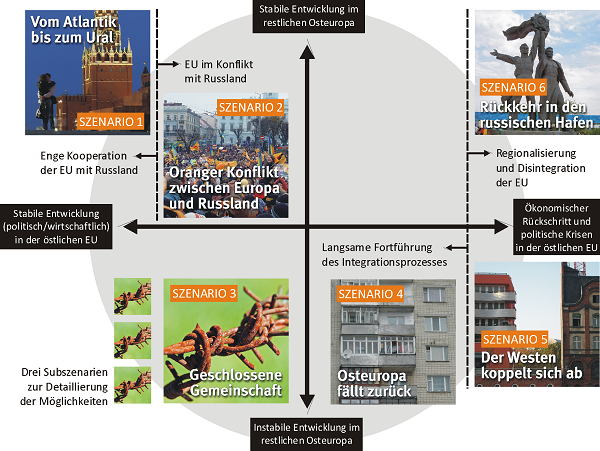The Future of Eastern Europe 2030
In the face of multiple uncertainties, ScMI has developed six scenarios for the future of Central Eastern and Eastern Europe. These scenarios look at the development of the current EU member states and the rest of Eastern Europe as well as specific regions such as the Balkans and the Caucasus.What will be the economic importance of Eastern Europe in the future - as a market, as an energy supplier, as an economic player? How stable will it be? What will Russia's relationship with the EU look like? Where will the other states in the region orient themselves? Which part of Eastern Europe will belong to the EU - and what impact will this have on the development of the EU as a whole?
Many uncertainties characterize the development of the region between the Oder and the Bug. Therefore, it was obvious to think ahead about its long-term development possibilities with the help of scenarios. It was not the goal of ScMI AG to depict an exact future in the sense of a forecast. Rather, the result is a "thinking tool" that decision-makers can use to anticipate the consequences of different possibilities and better prepare themselves for the future.
For ScMI , the main challenge in creating the scenarios was to strike a balance between an overarching perspective and a sufficiently concrete and specific view. The scenarios look at the development of individual subregions such as the current EU member states and the rest of Eastern Europe and also include specific regions such as the Balkans and the Caucasus. At the same time, however, with the exception of Russia, they do not map specific developments of individual countries. In total, six future scenarios have emerged from the scenario process:
A summary of the scenarios is available for download here. If you are interested in the results, please contact us.




